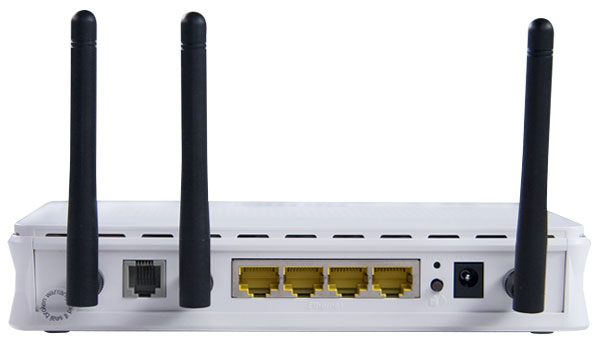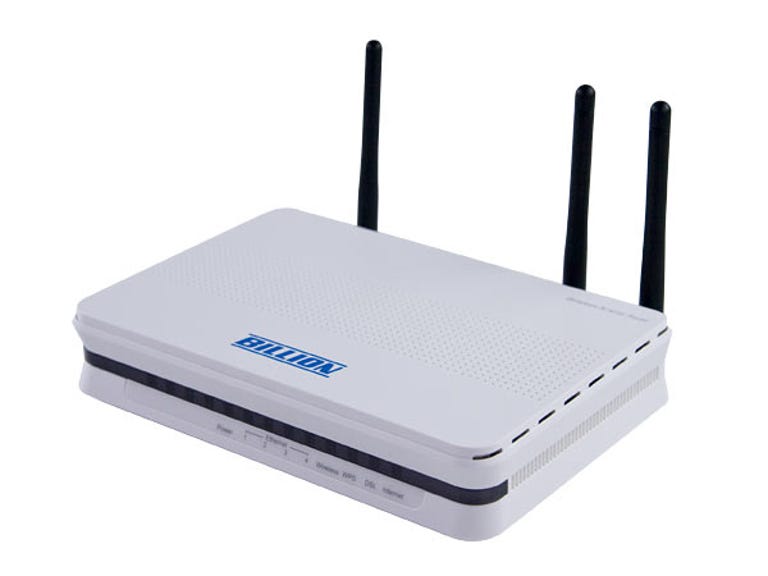 Why You Can Trust CNET
Why You Can Trust CNET Billion BiPAC 7300N review: Billion BiPAC 7300N
The Billion BiPAC 7300N is the little workhorse that could. Between this and the 7800NL we'd have a hard choice deciding, which would essentially come down to the specific features we'd want in a router.
Compared to its other routers, Billion's BiPAC 7300N is quite petite. At first glance this pint-sized parcel doesn't seem much more than an ordinary ADSL2+ modem/router, but lift the covers and a few interesting features arise, such as the ability to turn one of the four 100Mb Ethernet ports into a WAN port, WDS support and the ability to set up VLANs.
The Good
The Bad
The Bottom Line
Specs at a glance
| Firmware tested | 1.07 |
|---|---|
| ADSL2+ modem | Yes |
| Annex M | Yes |
| 3G modem | No |
| Wireless protocols | 802.11b/g/n |
| Highest wireless security | WPA2 |
| WDS | Yes |
| Ethernet ports | 4x 100Mb |
| USB print sharing/storage | No |
| Accessories | Ethernet cable, phone cable, PCRange line filter, CD containing quick-start guide and manual |
Connections

ADSL line, four 100Mb Ethernet ports, reset and WPS button, power jack. Unlike Billion's other models, there is no hardware on/off switch to be found, a large annoyance. (Credit: Craig Simms/CBS Interactive)
UI and features
The user interface (UI) on the 7300N is split into basic and advanced modes, and by and large is easy to navigate for those familiar with networking. Those who aren't will receive absolutely no help as to what anything means — even the Quick Start menu option is devoid of explanations, as it simply shows you the ADSL and wireless configuration pages. Less intimidating perhaps than all the advanced pages, but a new networker will still need to do a bit of research before understanding things.
Billion's interface is great, so long as you already know what you're doing. (Screenshot by CBS Interactive)
As mentioned before the 7300N can create VLANs; supports WDS, IP aliasing, time of day internet restrictions and URL filtering; and also has a Wake on LAN feature.
Performance
After analysing the spectrum with InSSIDer, an empty channel of either 1, 6 or 11 is chosen for 2.4GHz wireless testing. The router is restricted to the 20MHz band and will only allow 802.11n clients. If possible, the MCS is set to 15.
We use iperf to determine throughput, running eight streams, with a TCP window size of 1MB, and an interval of one second. The test is run for five minutes in three different locations, on two separate occasions. The locations are in the same room as the router, one floor down around spiral stairs and with concrete walls and floors, and two floors down under the same conditions.
The wireless throughput is tested using three chipsets, the Atheros AR5008X, Ralink RT2870 and Intel 5100AGN, then all results are averaged.
(Longer bars indicate better performance)
Unlike the 7800NL, the 7300N does very well at long distances, almost catching the 7800N. Short to medium distance may not come out on top, but it's by no means bad.
ADSL performance is simply measured by the sync speed on an Internode ADSL2+ connection to the St Leonards exchange, on Internode's very high speed profile. If the connection remains stable over a period of time, the sync speed is recorded.
(Longer bars indicate better performance)
This is the first time we've seen a major shift in our sync speeds across ADSL2+ modems, and sadly for the 7300N it's for the worst, losing a significant amount on the download sync. We tested this across multiple days and swapped routers around to make sure we hadn't developed an unexpected line issue, but the results remained the same.
Power consumption
We measured power consumption using a Jaycar mains digital power meter. It's important to note here that due to limitations of the meter, measurements are limited to values 1W and greater, and are reported in 1W increments.
The wireless radio was turned on, and an iperf test begun for measurement, using one wireless client and one wired.
| Juice Box |  |
|---|---|
| Transmitting | 7W |
| Idle | 7W |
The frugal 7300N doesn't care if you're transmitting wirelessly or not — it's going to use 7W.
Warranty
A 24-month warranty is offered on all Billion products, and is covered by PCRange, Billion's distributor in Australia.
Conclusion
The Billion BiPAC 7300N is the little workhorse that could. Between this and the 7800NL we'd have a hard choice deciding, which would essentially come down to the specific features we'd want in a router. We're concerned by the lower than usual ADSL2+ sync speeds, but the WAN and VLAN functionality and good wireless performance for the price makes the 7300N a decent buy for those on a budget.



